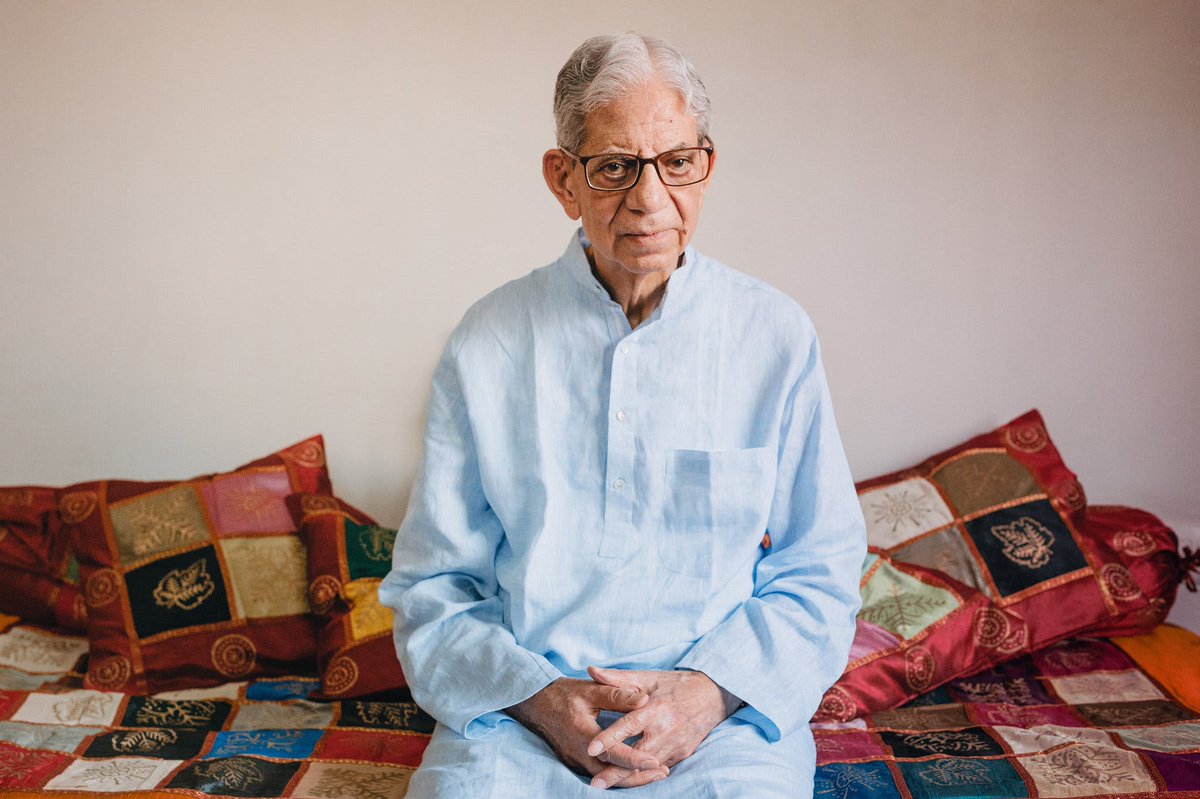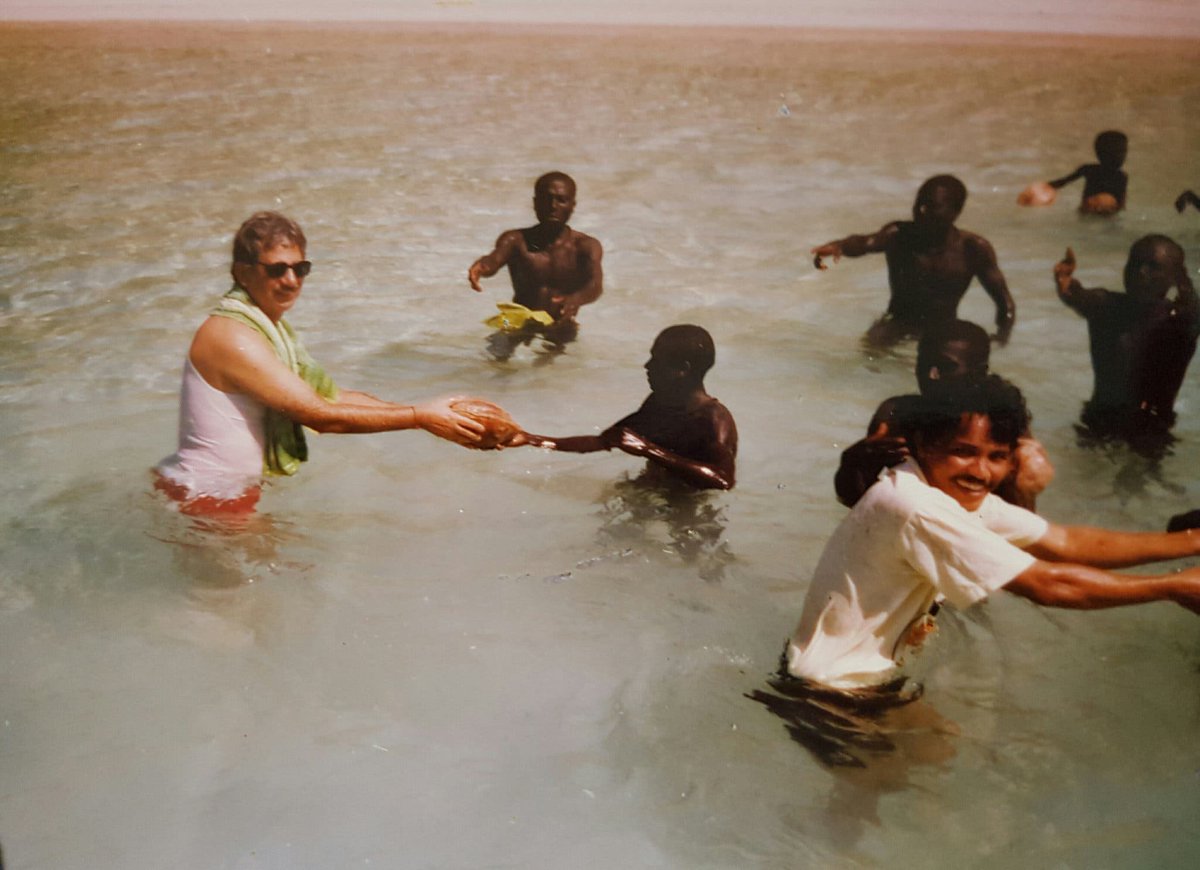
Living on a remote island in the Bay of Bengal, they have virtually zero contact with the outside world.
Many of those that have tried visiting them have been turned away, and often worse: killed.
A thread on the Sentinelese people, "the most dangerous tribe in the world":
Many of those that have tried visiting them have been turned away, and often worse: killed.
A thread on the Sentinelese people, "the most dangerous tribe in the world":

We start with some geography.
The Sentinelese Tribe live on the Indian territory of North Sentinel Island, about halfway between India and Myanmar.
Indian Census data suggests there were 15 people living there in 2011, although it’s estimated that there are a few hundred.
The Sentinelese Tribe live on the Indian territory of North Sentinel Island, about halfway between India and Myanmar.
Indian Census data suggests there were 15 people living there in 2011, although it’s estimated that there are a few hundred.

How could Census data be so inaccurate, you ask?
Well, for starters: it’s illegal for anyone to visit North Sentinel Island, seen here.
American missionary John Allen Chau tried it in November of 2018 in order to convert the tribe to Christianity, but he met a tragic fate.
Well, for starters: it’s illegal for anyone to visit North Sentinel Island, seen here.
American missionary John Allen Chau tried it in November of 2018 in order to convert the tribe to Christianity, but he met a tragic fate.

To get there, Chau hired two fishermen to illegally sail him to the island.
The only problem?
When he arrived, he was met by a bombardment of metal tipped arrows.
Fleeing for safety back to the boat, he wrote in his diary:
“What makes them become this defensive and hostile?”
The only problem?
When he arrived, he was met by a bombardment of metal tipped arrows.
Fleeing for safety back to the boat, he wrote in his diary:
“What makes them become this defensive and hostile?”

But Chau was adamant on meeting the Sentinelese.
He tried swimming ashore again later that night and instructed the fishermen not to wait for him this time around.
But two days later, fishermen saw - from a distance - the Sentinelese burying his body.
Chau was killed.
He tried swimming ashore again later that night and instructed the fishermen not to wait for him this time around.
But two days later, fishermen saw - from a distance - the Sentinelese burying his body.
Chau was killed.
Chau hasn’t been the only one to die at the hands of the Sentinelese.
Two Indian fishermen suffered the same fate in 2006 when their boat drifted ashore.
Other fishermen who witnessed the event said the pair was fatally attacked by “near-naked axe-wielding tribal warriors.”
Two Indian fishermen suffered the same fate in 2006 when their boat drifted ashore.
Other fishermen who witnessed the event said the pair was fatally attacked by “near-naked axe-wielding tribal warriors.”

Earlier in 2004, when a tsunami devastated and killed hundreds of thousands in India, Indonesia, Thailand, and Sri Lanka, Indian government helicopters hovered over North Sentinel Island to gauge the damage.
They were met with tribe members firing arrows at them, as seen here.
They were met with tribe members firing arrows at them, as seen here.

All of these strange and frightening stories naturally beg the following question:
Why do the Sentinelese prefer so strongly to be, well...left alone?
Why do the Sentinelese prefer so strongly to be, well...left alone?
We rewind to 1880.
The British had declared North Sentinel Island a colony.
From there, Navy Officer Maurice Vidal Portman, seen here, captured four Sentinelese children and an elderly couple and took them to the British-controlled Port Blair, where all six fell deathly ill.
The British had declared North Sentinel Island a colony.
From there, Navy Officer Maurice Vidal Portman, seen here, captured four Sentinelese children and an elderly couple and took them to the British-controlled Port Blair, where all six fell deathly ill.

When the elderly couple died, Portman returned the four children to North Sentinel Island, where it’s surmised that they spread diseases to other members of the tribe.
Imagine: the first time foreign visitors arrive on your island, they kidnap your own, only to return (some of) them with a fatal, infectious disease.
With that experience… what would you think of foreign visitors?
What would you think of the outside world?
With that experience… what would you think of foreign visitors?
What would you think of the outside world?
So sixteen years later, when an escaped convict arrived to North Sentinel Island in 1896, it was clear the Sentinelese had no trust for visitors:
The escaped convict was found days later by a colonial search party, washed ashore full of arrow wounds and a cut throat.
The escaped convict was found days later by a colonial search party, washed ashore full of arrow wounds and a cut throat.
From then on, for much of the early 20th century, North Sentinel Island went nearly untouched by the outside world, save for when in 1970, Indian authorities dropped a declaration from a helicopter stating the island had become Indian territory.
The Sentinelese didn't respond.
The Sentinelese didn't respond.

Then in 1974, folks from National Geographic visited the island and took several photographs from afar (one seen here).
But even so, during the expedition, one National Geographic director caught a spear to the thigh.
Credit: @NatGeo
But even so, during the expedition, one National Geographic director caught a spear to the thigh.
Credit: @NatGeo

While these one-off visits never led to successful or peaceful interactions with the Sentinelese, Indian anthropologist T N Pandit, now 87, tried a different approach for much of the 1960s, 1970s, and 1980s. 

Instead of arriving onshore unannounced, Pandit and his team would float gifts to the shoreline from their boats, such as pots, pans, coconuts...and even a live pig (which the Sentinelese immediately stabbed to death and buried). 

Then in 1991, after several expeditions in which they floated gifts to the Sentinelese, Pandit and his team decided to finally visit North Sentinel Island...except only this time, it wouldn’t be from afar. 

"We jumped out of the boat and stood in neck-deep water, distributing coconuts and other gifts," Pandit said.
But nonetheless, he and his team were not allowed to step foot on the island.
But nonetheless, he and his team were not allowed to step foot on the island.

So when Pandit got a bit too close for comfort, a tribe member gave him a warning:
“One young Sentinel boy made a funny face, took his knife and signalled to me that he would cut off my head. I immediately called for the boat and made a quick retreat," Pandit wrote.
“One young Sentinel boy made a funny face, took his knife and signalled to me that he would cut off my head. I immediately called for the boat and made a quick retreat," Pandit wrote.

Indian Anthropologist Madhumala Chattopadhyay, also a part of the 1991 mission, visited again a few months later.
But this time around?
The Sentinelese came into the visitors’ boats and “even tried to take the rifle belonging to the police, mistaking it to be a piece of metal.”
But this time around?
The Sentinelese came into the visitors’ boats and “even tried to take the rifle belonging to the police, mistaking it to be a piece of metal.”

But again -- a boundary was crossed.
A team member tried taking one of the Sentinelese’s ornaments, and it seemed a step too far.
“The man got angry and whipped out his knife. He gestured to us to leave immediately and we left.”
A team member tried taking one of the Sentinelese’s ornaments, and it seemed a step too far.
“The man got angry and whipped out his knife. He gestured to us to leave immediately and we left.”
If there’s one thing these expeditions in 1991 or events in 2004, 2006 and 2018 have taught us, it’s that the Sentinelese prefer to stay…uncontacted.
@sophiegrig from Survivor International writes that aside from being illegal, it’s also dangerous...for everyone.
@sophiegrig from Survivor International writes that aside from being illegal, it’s also dangerous...for everyone.

First, the Sentinelese have unlikely developed immunity to any of the illnesses we may carry (as the story from 1880 taught us).
That is, what may be a common cold for us could be a deadly flu for them, easily transmissible in what may be an innocent visit to the island.
That is, what may be a common cold for us could be a deadly flu for them, easily transmissible in what may be an innocent visit to the island.
Second, as our expeditions to North Sentinel Island have been made in our quest to know more about the Sentinelese, anthropologist @sitavenkateswar reminds us:
“When it comes to the Sentinelese, it is not ethical to seek to know, because they do not have a say in the matter.”
“When it comes to the Sentinelese, it is not ethical to seek to know, because they do not have a say in the matter.”

With this in mind, the Sentinelese are one of over 100 “uncontacted tribes” in the world, and it’s important to understand they’re not as violent or warmongering as stories suggest.
“We are the aggressors here,” Pandit says.
"We are the ones trying to enter their territory."
“We are the aggressors here,” Pandit says.
"We are the ones trying to enter their territory."
In short, perhaps the title they’ve been given as “most dangerous tribe in the world” is unfair.
As Madhumala Chattopadhyay reiterates:
“The tribes of the islands do not need outsiders to protect them. What they need is to be left alone.”
As Madhumala Chattopadhyay reiterates:
“The tribes of the islands do not need outsiders to protect them. What they need is to be left alone.”

Learn something new today?
Follow @DavidZabinsky for more threads like this one on the interesting people and places of our world.
Follow @DavidZabinsky for more threads like this one on the interesting people and places of our world.
Sources and more info:
bbc.com/news/world-asi…
forbes.com/sites/migomban…
insider.com/sentinelese-tr…
nationalgeographic.com/culture/articl…
nationalgeographic.com/culture/articl…
nytimes.com/2017/05/05/wor…
survivalinternational.org/tribes/sentine…
theguardian.com/world/2006/feb…
thenewsminute.com/article/why-me…
bbc.com/news/world-asi…
forbes.com/sites/migomban…
insider.com/sentinelese-tr…
nationalgeographic.com/culture/articl…
nationalgeographic.com/culture/articl…
nytimes.com/2017/05/05/wor…
survivalinternational.org/tribes/sentine…
theguardian.com/world/2006/feb…
thenewsminute.com/article/why-me…
• • •
Missing some Tweet in this thread? You can try to
force a refresh

















